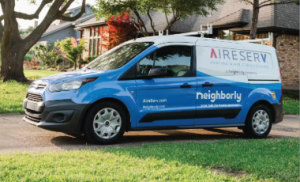Top HVAC Tips for Energy Savings and Peak Performance in the Bay Area
Understanding the Importance of HVAC Maintenance for Energy Savings
Maintaining your HVAC system is crucial for both energy savings and peak performance. Regular maintenance ensures that your system operates efficiently, reducing energy consumption and lowering your utility bills. According to the U.S. Department of Energy, a well-maintained HVAC system can save you up to 30% on energy costs.
One of the most important maintenance tasks is changing the air filters regularly. Clogged filters restrict airflow, forcing your HVAC system to work harder and consume more energy. By replacing filters every 1-3 months, you can improve energy efficiency and extend the lifespan of your system.
Another essential maintenance task is cleaning the coils. Over time, dirt and debris accumulate on the coils, hindering heat transfer and reducing efficiency. Regular coil cleaning not only improves energy efficiency but also helps prevent breakdowns and costly repairs.
Additionally, scheduling annual professional HVAC inspections is crucial. A trained technician can identify and fix any issues before they escalate, ensuring optimal performance and energy savings. They will check refrigerant levels, inspect electrical connections, and clean the system thoroughly, among other tasks.
Tips for Optimizing HVAC Performance in the Bay Area Climate
The Bay Area climate is known for its mild winters and cool summers, making it important to optimize your HVAC system for these specific conditions. Here are some tips to help you achieve peak performance and energy savings in this region:
1. Utilize programmable thermostats: Set your thermostat to adjust temperatures based on your schedule. Lowering the temperature during the night or when you’re away can significantly reduce energy consumption. According to the U.S. Department of Energy, you can save up to 10% per year on heating and cooling costs by simply lowering your thermostat by 7-10 degrees Fahrenheit for 8 hours a day.
2. Take advantage of natural ventilation: Open windows and use ceiling fans during mild weather to circulate fresh air and reduce reliance on your HVAC system. This can help save energy and improve indoor air quality.
3. Optimize insulation: Proper insulation is essential for maintaining a comfortable indoor temperature and reducing energy waste. Insulate your home’s walls, attic, and ductwork to prevent heat transfer and air leaks.
4. Use zoning systems: If you have a larger home or multiple floors, consider installing zoning systems. These systems allow you to control the temperature in different areas independently, ensuring optimal comfort and energy efficiency.
Energy-Efficient HVAC Upgrades for Peak Performance
Upgrading your HVAC system can significantly improve energy efficiency and overall performance. Here are some energy-efficient upgrades to consider:
1. High-efficiency HVAC units: Replace your old, inefficient HVAC system with a high-efficiency model. Look for units with a high Seasonal Energy Efficiency Ratio (SEER) rating for cooling and a high Annual Fuel Utilization Efficiency (AFUE) rating for heating. These ratings indicate the system’s energy efficiency, with higher numbers representing better efficiency.
2. Variable-speed motors: Consider upgrading to HVAC systems with variable-speed motors. These motors adjust their speed based on the heating or cooling demand, resulting in better energy efficiency and improved comfort.
3. Energy recovery ventilators (ERVs): ERVs help improve indoor air quality while reducing energy consumption. These devices exchange stale indoor air with fresh outdoor air, recovering heat or coolness from the outgoing air to precondition the incoming air.
4. Duct sealing and insulation: Leaky ducts can waste a significant amount of energy. Have a professional inspect and seal any leaks in your ductwork. Additionally, insulating your ducts can prevent heat loss or gain, improving overall energy efficiency.
Smart Thermostat and Automation: Harnessing Technology for Energy Savings
Smart thermostats and automation technologies have revolutionized HVAC systems, allowing homeowners to optimize energy savings and comfort. These technologies offer advanced features such as remote control, learning capabilities, and integration with other smart devices. Here’s how you can harness technology for energy savings:
1. Smart thermostats: These devices learn your schedule and preferences, automatically adjusting temperatures to maximize energy savings. You can control them remotely through smartphone apps, ensuring your HVAC system is only running when needed.
2. Home automation systems: Integrating your HVAC system with a home automation system allows for seamless control and coordination of various devices. For example, you can program your HVAC system to adjust temperatures based on occupancy, weather conditions, or time of day.
3. Energy monitoring: Many smart thermostats and home automation systems provide energy monitoring features. These allow you to track your energy consumption in real-time, identify patterns, and make adjustments to optimize energy savings.
4. Voice control: Voice-activated assistants, such as Amazon Alexa or Google Assistant, can be integrated with your HVAC system. This allows you to control temperature settings and other HVAC functions using voice commands, providing convenience and energy savings.
In conclusion, understanding the importance of HVAC maintenance, optimizing performance for the Bay Area climate, upgrading to energy-efficient systems, and harnessing technology through smart thermostats and automation are all key strategies for achieving energy savings and peak performance in the Bay Area. By implementing these tips, you can reduce your energy consumption, lower utility bills, and contribute to a more sustainable future.


